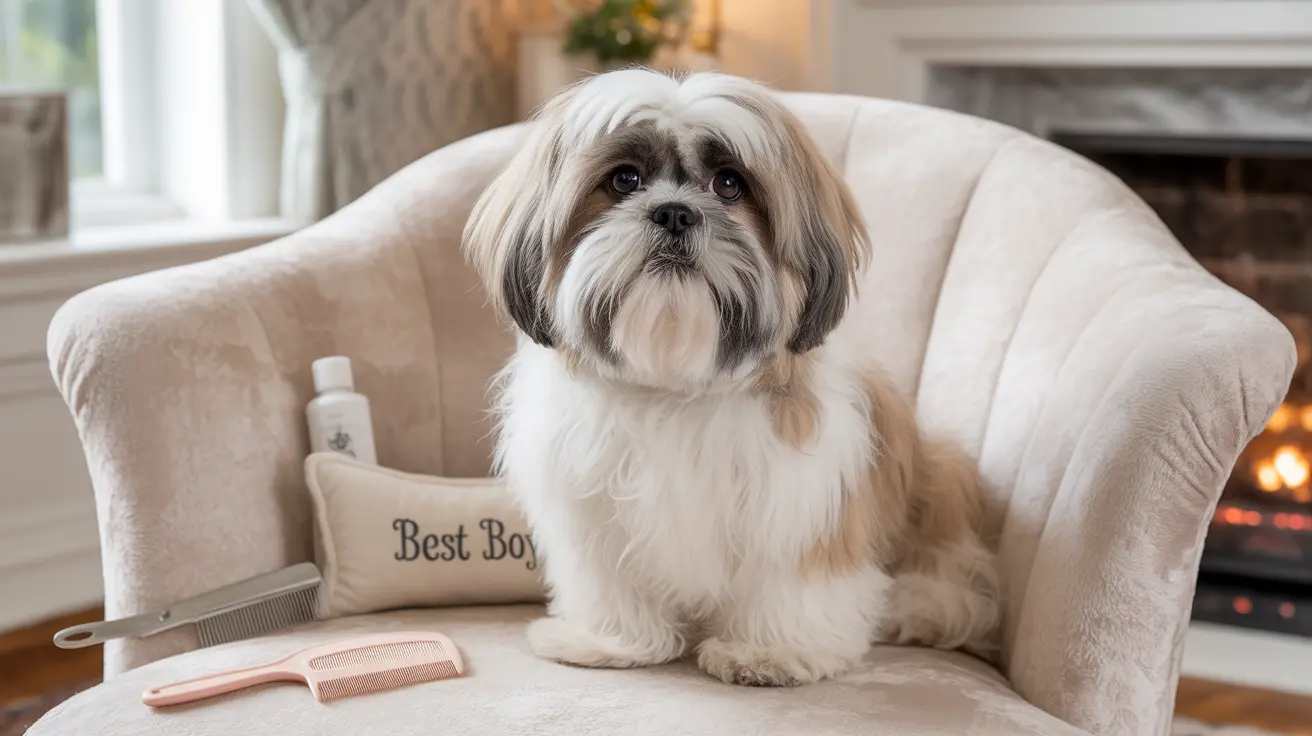The Maltese breed is renowned for its stunning white, silky coat and is often sought after by those looking for a low-shedding companion. If you're wondering about Maltese shedding habits, you'll be pleased to know that these elegant dogs are among the lowest-shedding breeds available.
Understanding Maltese shedding patterns and coat care requirements is essential for potential and current owners. Let's explore everything you need to know about Maltese shedding characteristics and how to maintain their beautiful coat.
Understanding Maltese Coat Type
Maltese dogs have a single-layer coat composed of fine, silk-like hair rather than traditional fur. This unique coat structure is primarily responsible for their minimal shedding tendency. Unlike double-coated breeds that experience seasonal "blowing" of their undercoat, Maltese dogs maintain a relatively consistent coat throughout the year.
Their hair grows continuously, similar to human hair, and typically needs to be trimmed regularly unless you're maintaining a show coat. This continuous growth pattern means that shed hair often becomes trapped in the coat rather than falling onto your floors and furniture.
How Much Do Maltese Actually Shed?
While no dog is completely non-shedding, Maltese dogs come remarkably close. Most owners report finding very few loose hairs around their homes, often noticing more of their own hair than their dog's. The minimal shedding that does occur is usually only noticeable during grooming sessions.
However, certain factors can influence shedding in Maltese dogs:
- Puppy coat transition (around 6-12 months of age)
- Stress or anxiety
- Poor nutrition
- Health issues
- Hormonal changes
Essential Grooming Requirements
Despite their low-shedding nature, Maltese dogs require regular grooming to maintain their coat's health and appearance:
Daily Maintenance
- Gentle brushing to prevent matting
- Face and eye area cleaning
- Checking for any skin issues or abnormalities
Weekly Care
- Deep brushing sessions
- Detangling if necessary
- Coat inspection for any problems
Monthly Grooming
- Professional grooming (recommended)
- Bath with appropriate dog shampoo
- Nail trimming and ear cleaning
Managing Maltese Coat Health
Proper nutrition plays a crucial role in maintaining a healthy Maltese coat. A high-quality diet rich in protein and essential fatty acids can help minimize shedding and maintain coat strength. Regular veterinary check-ups are also important to catch any health issues that might affect coat health early.
Environmental factors can impact coat health as well. Maintaining appropriate humidity levels in your home and protecting your Maltese from extreme weather conditions can help prevent unnecessary hair loss and damage.
Frequently Asked Questions
Do Maltese dogs shed a lot or very little compared to other breeds?
Maltese dogs shed very little compared to most other breeds. They are considered one of the lowest-shedding dog breeds available, making them an excellent choice for those wanting to minimize pet hair in their home.
How often should I groom and brush my Maltese to manage shedding effectively?
Maltese dogs should be brushed daily to prevent matting and remove any loose hairs. Professional grooming is recommended every 4-6 weeks, with baths every 2-3 weeks depending on coat length and lifestyle.
What factors can cause unusual or increased shedding in a Maltese?
Unusual shedding in Maltese dogs can be triggered by stress, poor nutrition, health issues, hormonal changes, or the natural puppy coat transition. Any sudden increase in shedding should be evaluated by a veterinarian.
Are Maltese dogs truly hypoallergenic and safe for people with allergies?
While Maltese dogs are often recommended for allergy sufferers due to their low-shedding nature, no dog is truly hypoallergenic. They produce less dander than many breeds but can still cause allergic reactions in sensitive individuals.
How can diet, health, and stress influence shedding in Maltese dogs?
Diet, health, and stress levels can significantly impact a Maltese's coat health and shedding. A balanced diet, regular veterinary care, and a stable environment help minimize shedding and maintain optimal coat condition.
By understanding Maltese shedding patterns and maintaining proper grooming practices, you can ensure your Maltese's coat stays healthy and beautiful while keeping shed hair to a minimum in your home.






